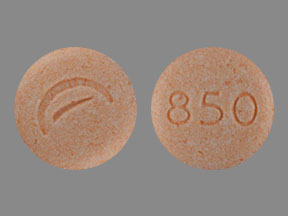
Guanfacine ER Coupons & Savings Card – Discount Prices from $8.45
Generic for: Intuniv
My prescription
Edit
1MG, Guanfacine ER (30 Tablet Extended Release 24 Hours)
Select pharmacy

CVS
$19.74
COUPON PRICE
Walmart
$8.45
COUPON PRICE
Walgreens
$14.04
COUPON PRICE
Albertsons
$14.55
COUPON PRICEFree Guanfacine ER Savings Card

Walmart
$8.45
Show this coupon to your pharmacist
ID
LH0BE5C735
PCN
CHIPPO
BIN
019876
GRP
LHX
This coupon is not insurance
More prescriptions for adhd
More prescriptions for adhd
Price history for Intuniv (brand) & Guanfacine ER (generic)
30 Tablet Extended Release 24 Hours, 1MG
Average retail price for Intuniv
Average retail price for Guanfacine ER
Average SaveHealth price for Guanfacine ER
Our price history data is based on aggregated prescription data collected from participating pharmacies in America. Our prescription data updates daily to reflect the latest price changes. If you notice a missing data point, it means there wasn't sufficient data available to generate a monetary value for that date.
We analyzed Guanfacine ER prices for (1MG, 30 Tablet Extended Release 24 Hours) over the last 12 months. The average retail price was $43.22, while the average price using the SaveHealth discount card was $12.38. That's a savings of approximately 71.36% when using our Guanfacine ER coupon.
Compared to the generic version, Intuniv had an average price of $359.57 over the same time period. With the SaveHealth savings card, Guanfacine ER is 96.56% cheaper on average than Intuniv.
*Retail prices are based on pharmacy claims data, and may not be accurate when we don't have enough claims.
Guanfacine ER dosage forms
Dosage Quantity Price from Per unit 1MG 30 Tablet Extended Release 24 Hours $8.45 $0.28 1MG 60 Tablet Extended Release 24 Hours $14.40 $0.24 1MG 90 Tablet Extended Release 24 Hours $23.22 $0.26 2MG 30 Tablet Extended Release 24 Hours $9.15 $0.30 2MG 60 Tablet Extended Release 24 Hours $15.79 $0.26 2MG 90 Tablet Extended Release 24 Hours $23.22 $0.26 3MG 30 Tablet Extended Release 24 Hours $10.11 $0.34 3MG 60 Tablet Extended Release 24 Hours $17.71 $0.29 3MG 90 Tablet Extended Release 24 Hours $24.66 $0.27 4MG 30 Tablet Extended Release 24 Hours $9.57 $0.32
| Dosage | Quantity | Price from | Per unit |
|---|---|---|---|
| 1MG | 30 Tablet Extended Release 24 Hours | $8.45 | $0.28 |
| 1MG | 60 Tablet Extended Release 24 Hours | $14.40 | $0.24 |
| 1MG | 90 Tablet Extended Release 24 Hours | $23.22 | $0.26 |
| 2MG | 30 Tablet Extended Release 24 Hours | $9.15 | $0.30 |
| 2MG | 60 Tablet Extended Release 24 Hours | $15.79 | $0.26 |
| 2MG | 90 Tablet Extended Release 24 Hours | $23.22 | $0.26 |
| 3MG | 30 Tablet Extended Release 24 Hours | $10.11 | $0.34 |
| 3MG | 60 Tablet Extended Release 24 Hours | $17.71 | $0.29 |
| 3MG | 90 Tablet Extended Release 24 Hours | $24.66 | $0.27 |
| 4MG | 30 Tablet Extended Release 24 Hours | $9.57 | $0.32 |
| 4MG | 60 Tablet Extended Release 24 Hours | $16.64 | $0.28 |
| 4MG | 90 Tablet Extended Release 24 Hours | $24.66 | $0.27 |
Guanfacine ER Warnings
This medication comes with essential safety information regarding potential risks. It is important to understand these warnings and discuss any concerns with your healthcare provider.
Low Blood Pressure or Heart Rate: Use of Guanfacine ER (Intuniv) may lead to decreased blood pressure or heart rate, potentially causing dizziness or faintness. This is more likely to occur when beginning treatment or increasing dosage. Regular monitoring of blood pressure and heart rate is necessary, particularly if you are on blood pressure medication. The side effects often diminish over time, but consult your healthcare provider if symptoms like dizziness, fatigue, or breathlessness persist. Increased risk factors include existing low blood pressure, heart or kidney problems, a history of fainting, dehydration, and concurrent use of medications that lower blood pressure or slow the heart rate.
Extreme Sleepiness: This medication may impair your ability to concentrate, think, or react, especially during the initial days of use. Avoid activities requiring full alertness, such as driving or operating machinery, until you know how the medication affects you. If extreme drowsiness persists, contact your healthcare provider. Risks are heightened if you take other sedative medications or consume alcohol.
Rebound High Blood Pressure: Abruptly discontinuing Guanfacine ER (Intuniv) after prolonged use can lead to rebound high blood pressure and symptoms like headaches, rapid heart rate, nausea, chest tightness, and anxiety. It is crucial to adhere to prescribed dosages and consult your healthcare provider before stopping the medication. They can guide you on a safe discontinuation plan. Individuals with high blood pressure are at greater risk.
Heart Problems: There is an increased risk of irregular heart rhythms. If you are using other medications that impact heart rhythm, inform your healthcare provider. Adjustments to your medications may be necessary, especially if there is a history of heart problems.
In case of an overdose or any adverse reactions, seek immediate medical attention to ensure your safety. Always follow your healthcare provider's guidance when using this medication.
Guanfacine ER Side Effects
Common side effects:
- Drowsiness
- Dizziness
- Dry mouth
- Constipation
- Tiredness
- Nausea
- Headache
- Stomach pain
Less common but important to monitor:
- Low blood pressure
Serious side effects:
- Dangerously low blood pressure
- Heart problems
- Serious allergic reaction
